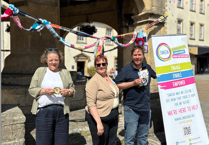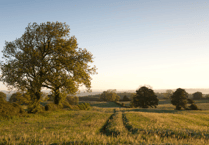CAN you guess where this week’s Mystery Photograph was taken?
Each week, the Journal invites readers to test their local knowledge by identifying a historic location from days gone by.
Last week's Mystery Photograph was taken at Wesleyan Chapel in Farrington Gurney.
.jpeg?width=752&height=500&crop=752:500)
The Wesleyan Chapel in Farrington Gurney stands as a modest yet enduring reminder of the village’s nonconformist Christian heritage. Built in the 19th century, the chapel served the local Methodist congregation during a time when Wesleyan Methodism was flourishing across rural Somerset.
Like many similar chapels, it offered an alternative to the established Church of England, with an emphasis on accessible preaching, personal faith, and strong community ties.
Though no longer used for regular worship, the building remains a point of local interest. Its simple architecture—typically featuring red brick, arched windows, and a slate roof—reflects the unadorned style favoured by Wesleyan Methodists of the period.
While some former chapels in the region have been converted into homes or community halls, the Farrington Gurney chapel continues to hold historical significance as part of the village’s religious and social fabric.
Many local residents remember attending Sunday school or family services there, and the chapel is often mentioned in conversations about the village’s past. Its presence is a quiet but enduring symbol of the changing patterns of worship and community life in the area.
Farrington Gurney itself is a small village with a long history, once closely linked to the coal mining industry that shaped much of the surrounding region.
Today, the village balances its rural character with good road connections and local amenities, including a primary school, pub, and farm shop. The legacy of its religious, agricultural, and industrial past can still be seen in its buildings and traditions, making it a place with both heritage and a strong sense of identity.
Here at the Journal, in collaboration with Radstock Museum, we would like to thank all those who take part each week.
.jpeg?width=752&height=500&crop=752:500)




Comments
This article has no comments yet. Be the first to leave a comment.